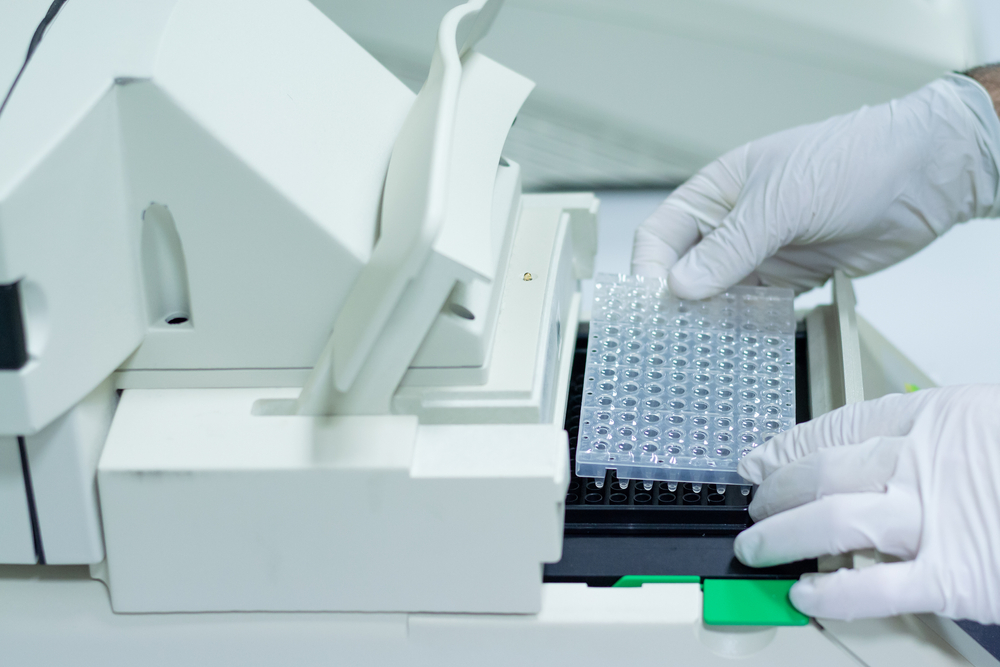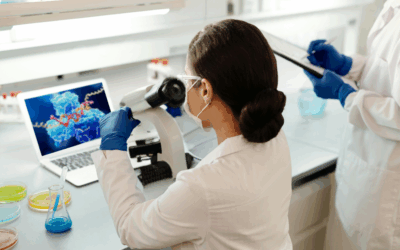Oligonucleotide drugs have become a hot topic in biomedicine due to their strong specificity, well-established design strategy, short development cycle, and wide range of targets. The development and innovation of oligonucleotide drug delivery platforms (such as conjugated delivery systems and nanoparticle carriers) have gradually overcome the bottleneck of oligonucleotide drug development, making it applicable to a broader range of indications. To better understand the absorption, distribution, metabolism, and excretion (ADME) characteristics of oligonucleotide drugs, it is necessary to adjust and upgrade existing biological analysis strategies to provide accurate quantification of oligonucleotides present in various substrates (including biological samples such as plasma or serum) and to achieve the desired detection sensitivity. Due to its unique technical features, qPCR technology is increasingly applied to the pharmacokinetics and pharmacodynamics of oligonucleotide drug bioanalysis.
Classification and Mechanism of Action of Oligonucleotide Drugs
Oligonucleotide drugs include small interfering RNA (siRNA), antisense oligonucleotide (ASO), microRNA (miRNA), small activating RNA (saRNA), aptamers, transcription factor decoys and ribozymes. ASO and siRNA types of oligonucleotide drugs are widely used.
Oligonucleotide drugs comprise single or double strands of artificially chemically synthesized oligonucleotides, generally composed of 19-25 nucleotides. They act on mRNA through complementary base-pairing, interfering with various biological processes such as gene unwinding, replication, transcription and mRNA splicing translation. As a result, abnormal genes lose their functions by regulating disease gene transcription and translation processes at the gene level. Compared with traditional small molecule drugs and antibody drugs, nucleic acid drugs can intervene from the source and inhibit the expression of disease-related genes into pathological proteins.
Approval Status of Oligonucleotide Drugs
With the progress of relevant research and drug delivery technology, the development momentum of oligonucleotide drugs has been rapid in recent years, and the number of nucleic acid drugs marketed worldwide has been increasing yearly. By August 2023, 16 oligonucleotide drugs had been marketed worldwide, including nine ASO drugs, five siRNA drugs, two aptamers, and three that have been delisted.
Bioanalytical Techniques for Oligonucleotide Drugs
Traditional bioanalytical methods, such as mass spectrometry, hybridization-based high-performance liquid chromatography-fluorometry, and molecular probe hybridization assays, have been proven to be very useful tools for promoting the development of oligonucleotide drugs. Mass spectrometry remains the only method that can distinguish metabolites from full-length siRNAs. The main advantage of molecular hybridization methods is their higher sensitivity and lower susceptibility to nucleotide chemical modification compared to mass spectrometry. However, the sensitivity of MS methods is only in the range of ng/mL, while the sensitivity of reverse transcription-quantitative polymerase chain reaction (RT-qPCR) can be from pg/mL to fg/mL. Compared with mass spectrometry and hybridization methods, the RT-qPCR method has advantages such as fast method development and short sample processing time, wider dynamic range, less consumption of biological samples and higher throughput. It is more suitable for sample analysis in the clinical research stage.
Principle of Oligonucleotide Detection by RT-qPCR
Since oligonucleotides usually have only 19-25 bases and short sequences, the traditional design of primers and probes cannot achieve amplifying nucleotide sequences. Therefore, it is necessary to extend the oligonucleotide length to be tested and construct a PCR template long enough before PCR amplification. To solve the problem, a series of methods to extend the sequence length of nucleic acids have been developed, such as the stem-loop method, Poly A polymerase tailing method, ligation method and primer extension method. The stem-loop method and Poly A polymerase tailing methods are the two commonly used.
A Final Word
Interest in oligonucleotide drugs is increasing due to their strong specificity, established design strategy, short development cycle and broad target range. With advancements in drug delivery platforms, such as conjugated delivery systems and nanoparticle carriers, these drugs are overcoming development bottlenecks and are being applied to more indications. There is a need to upgrade bioanalytical strategies to accurately quantify oligonucleotides in biological samples, with emphasis on the application of qPCR technology. This method is favored for its technical advantages, including higher sensitivity, faster method development and better throughput compared to traditional techniques like mass spectrometry and hybridization.
As a global company with operations across Asia, Europe, and North America, WuXi AppTec provides a broad portfolio of R&D and manufacturing services that enable the global pharmaceutical and life sciences industry to advance discoveries and deliver groundbreaking treatments to patients. Through its unique business models, WuXi AppTec’s integrated, end-to-end services include chemistry drug CRDMO (Contract Research, Development and Manufacturing Organization), biology discovery, preclinical testing and clinical research services, helping customers improve the productivity of advancing healthcare products through cost-effective and efficient solutions. WuXi AppTec received an AA ESG rating from MSCI for the fourth consecutive year in 2024 and its open-access platform is enabling around 6,000 customers from over 30 countries to improve the health of those in need – and to realize the vision that “every drug can be made and every disease can be treated.”


